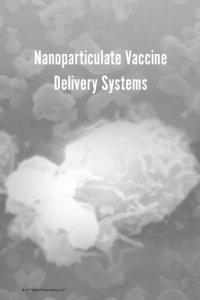
Ebook: Nanoparticulate Vaccine Delivery Systems
Author: Martin J. D'Souza
- Tags: Biotechnology Biological Sciences Science Math Immunology Basic Epidemiology Internal Medicine Pharmacy Pharmacology Reference Atlases Dictionaries Terminology Drug Guides Instruments Supplies Health New Used Rental Textbooks Specialty Boutique Allied Services Research Mathematics Agriculture Astronomy Astrophysics Biology Life Chemistry Earth Environmental Studies Mechanics Physics
- Year: 2015
- Publisher: Pan Stanford
- Language: English
- pdf
Recent years have seen the development of novel technologies that use nanoparticles and microparticles to deliver vaccines by the oral and microneedle-based transdermal route of administration. These new technologies enable the formulation of vaccine particles containing vaccine antigens, without loss of their biological activity during the formulation process. Also, multiple antigens, targeting ligands, and adjuvants can all be encapsulated within the same particle. When administered orally, these particles are designed to withstand the acidic environment of the stomach and are targeted to Peyer’s patches and the gut-associated mucosal immune system. Since these vaccines are particulate in nature, they are readily taken up by phagocytic antigen-presenting cells, such as M cells, dendritic cells, and macrophages in Peyer’s patches of the intestines, resulting in a strong immune response and antibody production. Since no needles are required for oral vaccines, this method of vaccine delivery is inexpensive and suitable for mass vaccination in the developing world as well as the developed world. This book discusses studies conducted on a wide array of vaccines, including vaccines for infectious diseases such as tuberculosis, typhoid, influenza, pneumonia, meningitis, human papillomavirus, and hepatitis B. It also discusses recent studies on vaccines for cancers such as melanoma and ovarian, breast, and prostate cancer.